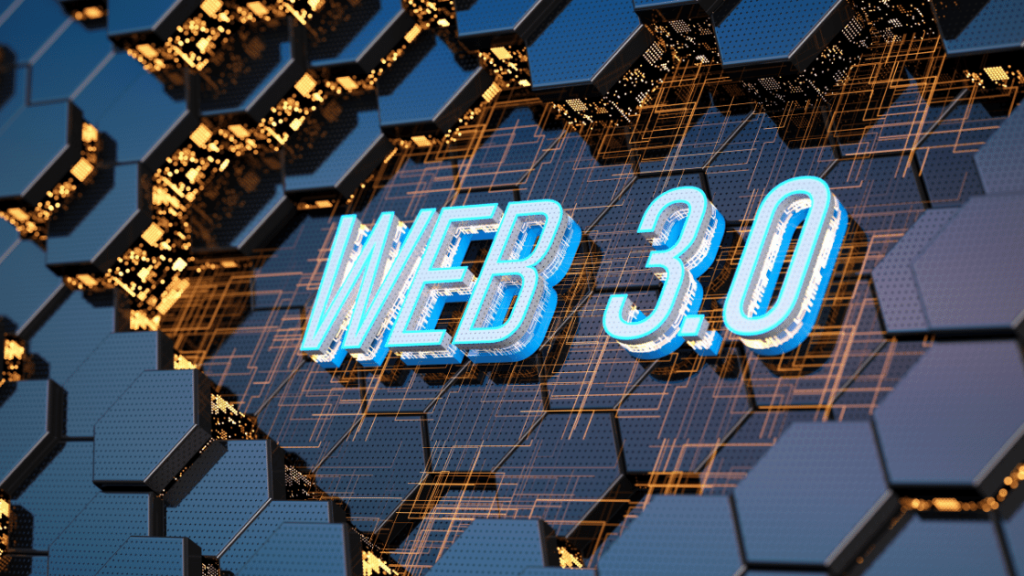Technology is consistently evolving and growing exponentially, opening doors to new possibilities. Have you ever imagined a new type of internet that can easily understand different inputs to provide tailored results? Well, the time is not so far when you step into Web 3.0.
Does this sound new to you?
Web 3.0 or is commonly referred to as the third-generation internet. If you are wondering, what are the new features that are being included in Web 3.0, and how is it different from the earlier versions of WWW? It comes with a data-driven Semantic Web with a machine-based understanding of data that focuses on developing a more intelligent and interlinked web experience for different users with different needs.
It is estimated that Web 3.0 will be widely adopted by the top leading companies globally.

Source- https://industrywired.com/web-3-0-benefits-for-businesses-the-ultimate-guide/
Everyone is aware of the static nature of the current web that somehow fails to adjust to the individual needs of each person experiencing it. But, Web 3.0, on the other hand, is more dynamic and interactive, thus boosting the interactivity among devices and users that are connected to the internet.
In this article, we will highlight facts and detailed information on Web 3.0, which will help you understand why the upcoming Web 3.0 will change the world innovatively.
Page Contents
Introduction to Web 3.0
Is the web’s future going to change for good and more powerful technology?
It is the latest third generation of the internet allowing the applications, softwares, and websites to simply process even the most complex information in an intelligent human-like way. It is possible because it leverages the benefits and capabilities of the advanced technologies, such as machine learning (ML), Big Data, decentralized ledger technology (DLT), etc.
Web 3.0 has stored the data and content in a decentralized way, creating a interconnection. Earlier, Web 3.0 was also known as the Semantic Web, a term introduced by Tim Berners-Lee. But, with time, the definition of Web 3.0 has evolved and has reached to new level of innovation.
Not only this, Web 3.0 lets the users and systems to interact with data quickly and easily. But it needs different programs to understand the stored information both conceptually and contextually. Web 3.0 is built on these two cornerstones.
The evolution to Web 3.0 is fantastic and has provided many features. But, how do we get here (Web 3.0)? Let’s see.

Source- https://www.singlegrain.com/web3/web-3-0/
Web 1.0: Static, Ready-Only (1989-2005)
Well, nobody in this world can doubt on the fact how the internet has improved the interactivity and become a crucial part of everyone’s life. Not a single task is possible without the internet, from accessing information to working from home to looking for new recipes, home internet, etc. The internet has a massive significance in everyone’s life.
It started in 1989 until 2005 with the below-mentioned primary technologies.
- HTML (HyperText Markup Language)
- HTTP (HyperText Transfer Protocol)
- URL (Uniform Resource Locator)
It was meant to find reliable information. But the web users were not free to explore more due to its “read-only” nature, and most discussions were done offline. Also, due to the absence of search engines, nothing was as simple as it is now.
To access any website, you must know the website address (URL).
Web 2.0 (1999-2012)
In 1999, Darcy DiNucci came up with the term “web 2.0” and gave direction to the journey of the internet that we are using today. It has allowed every type of users to interact on the Internet either using the social media platforms, content blogs, or other services.
At this time, smartphones came into the picture, leading to mobile computing.
It has boosted online interaction and discussion on open forums and allows Internet users to like, comment, or share.
Web 2.0 significantly shifted from static desktop web pages to an interactive encounters and user-created content. Infact, the top leading companies in the market, such as Uber, Airbnb, Facebook, etc. have adopted the web 2.0 reign.
Web 2.0 has made the technology easier for mobile, Social, and Cloud.
Web 3.0 (2012-ongoing)
Web 3.0 is based on decentralization. Like Web 2.0, it also leverages the power of the machine learning and artificial intelligence, along with the blockchain technology. Thus, resulted in a more robust real-world human communication.
It allows the users to have complete control over their data, including trading it without losing ownership or compromising their privacy. Also, it has made it easier for the users to access any website and their crucial data over the internet without the risk of being hacked or tracked.
One of the significant innovations in Web 3.0 is the digitization of assets using tokens. Tokenization refers to the conversion of the significant assetsinto a digital representation on a blockchain platform.
Web 3.0 comes with the below features.
- Semantic web
It improves the abilities of web technologies, and make some tasks easier for everyone, such as generating, sharing, and connecting the content through the quick internet search . you can even get into a detailed analysis by understanding the meaning of words rather than by keywords.
- Artificial intelligence
Web 3.0 combines the power of semantic capabilities with natural language processing, so that the computers can easily understand the provided information on a human-like level. It has improved the capability of doing complex tasks by automating them or by finding an easy alternative.
- 3D Graphics
With WEB 3.0, the 3D designs have become more accessible as it reduces the complexity of accessing websites and services in Web 3.0. For Example- museum guides, computer games, and geospatial contexts.
- Connectivity
Web 3.0 has improved the connection of the distributed data across the globe, thanks to semantic metadata. It has resulted in a better user experience as it opens gates to a new level of connectivity, providing access to all information available.
- Ubiquity
With Web 3.0, you can easily access the content and services irrespective of the time. Also, it lets you connect via any number of devices simultaneously, such as computers and smartphones. Web 3.0 has extended the features of Web 2.0 that are already ubiquitous in many ways.
- Blockchain
Web 3.0 also introduced blockchain technology, ensuring high-end encrypted user data. It has made it easier for large companies to control and accessing their data.
- Decentralized
Web 3.0 has decentralized data networks that store information or content within a peer-to-peer interconnection. Users can easily maintain and manage the ownership over their data and digital assets.
- Edge computing
Web 3.0 leverages the power of edge computing, where all the running applications and stored data get processed at the network edge on mobile phones, laptops, appliances, sensors, and even smart cars.
As per the latest stats, more than 2,500,000,000 users are currently on Web 3.0, and around 43% of people are trying to adopt it.

Source- https://industrywired.com/web-3-0-benefits-for-businesses-the-ultimate-guide/
If we consider the below image, web 3.0 has been widely adopted.

Source- https://industrywired.com/web-3-0-benefits-for-businesses-the-ultimate-guide/
How Web 3.0 Can Change Our Lives?
Web 3.0 has massively transformed the life of every business globally. It has eliminated the risk of making crucial transactions, ensuring trust among businesses, customers, suppliers, or employees.
If your business is not adapted to Web 3.0, then it is high time to think about it and take your business to another level of security and innovation. It will offer you the latest technology used in your business to outrank your competitors.




